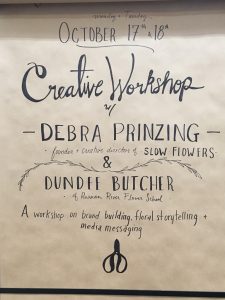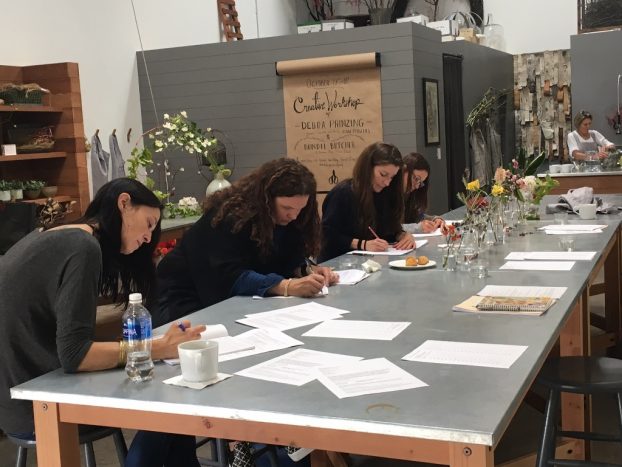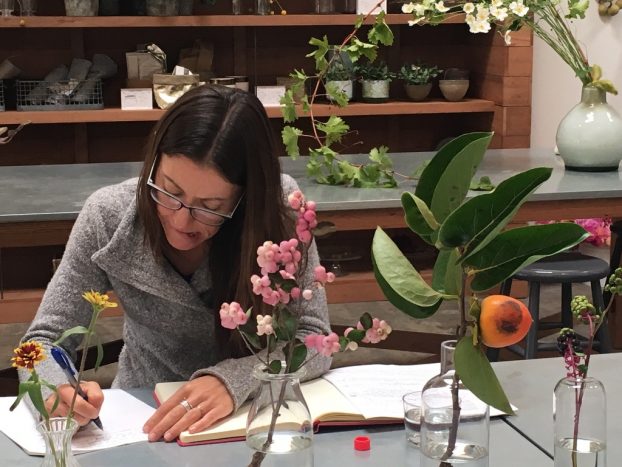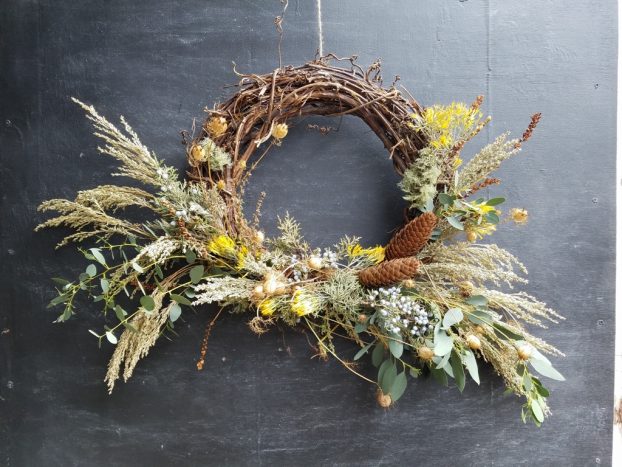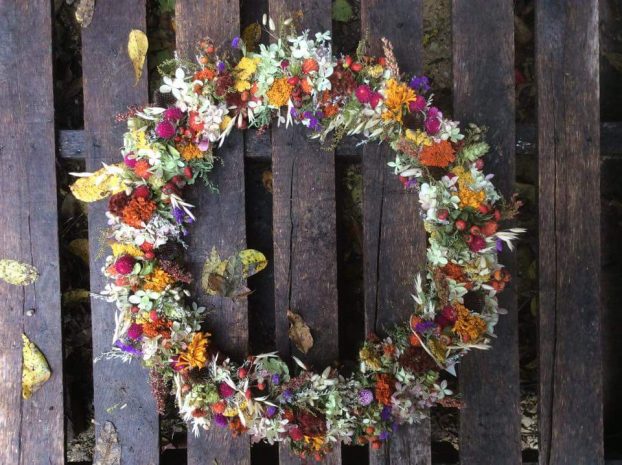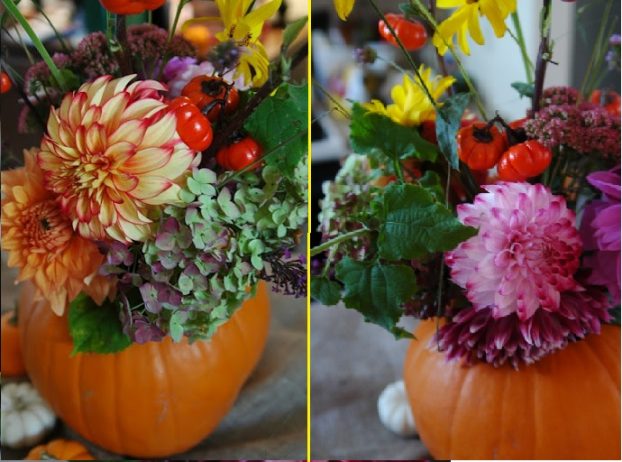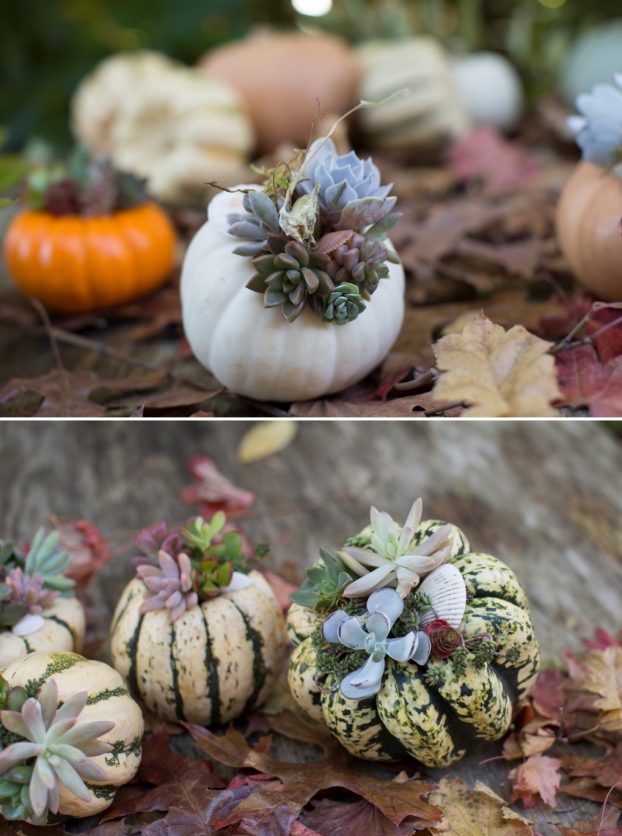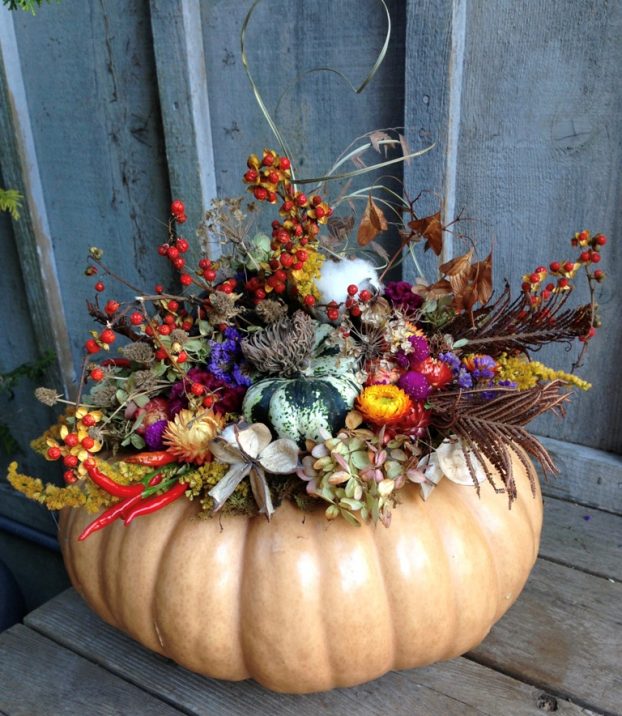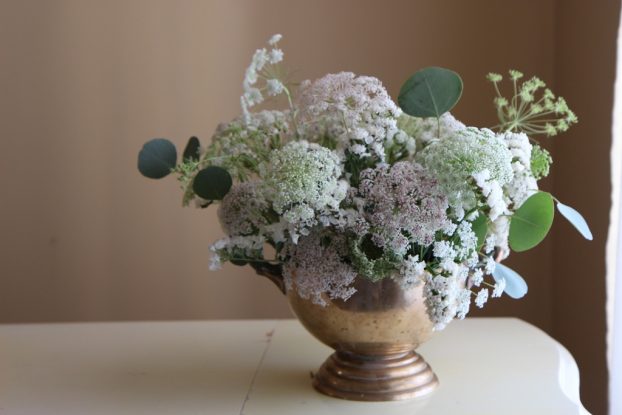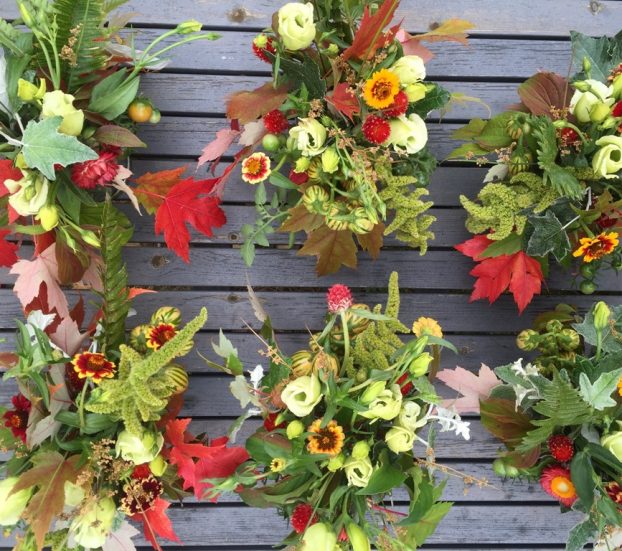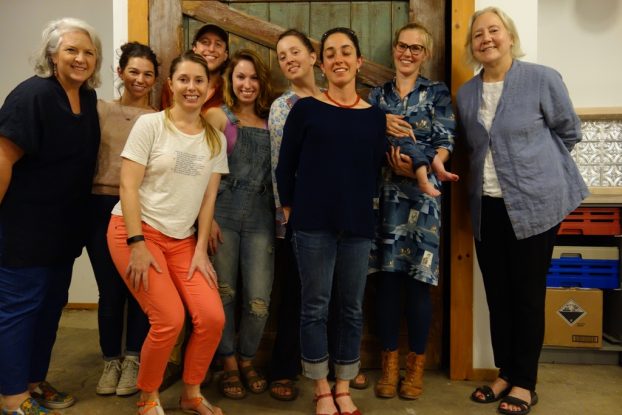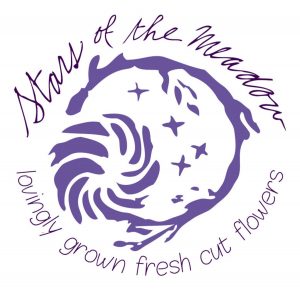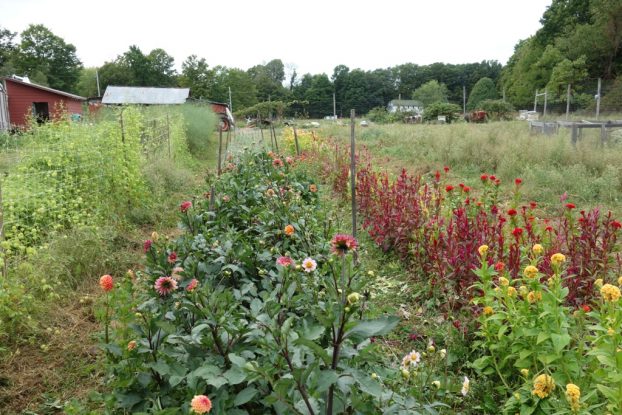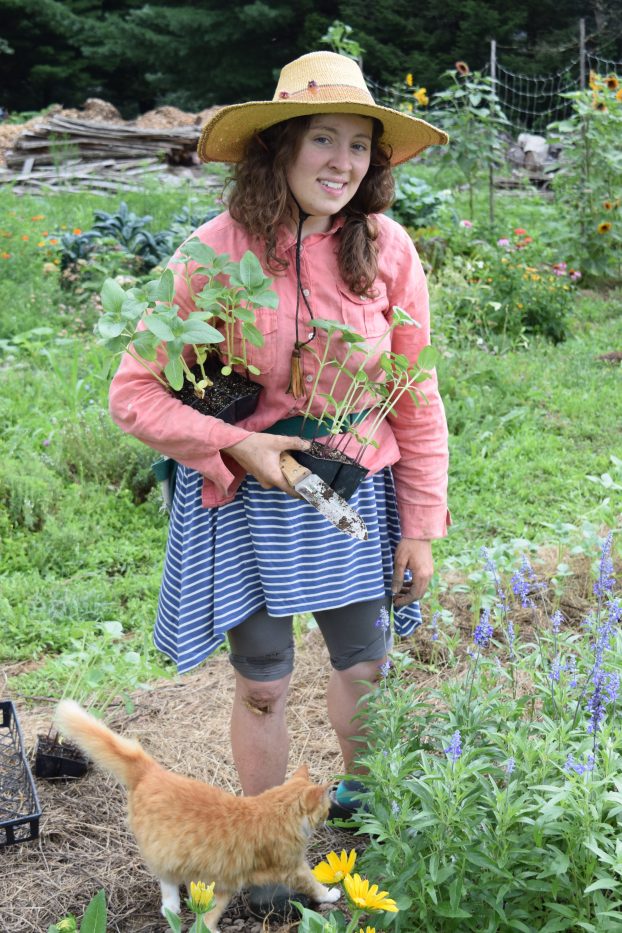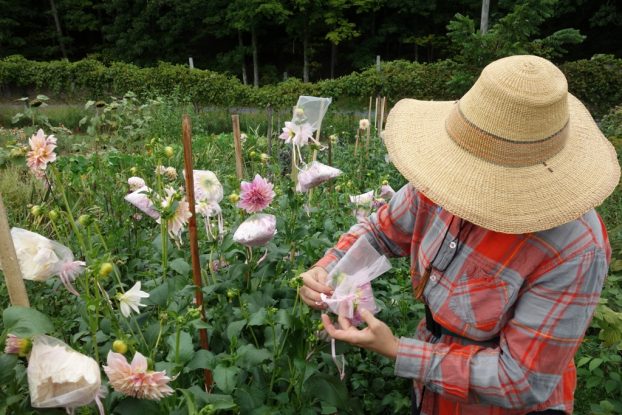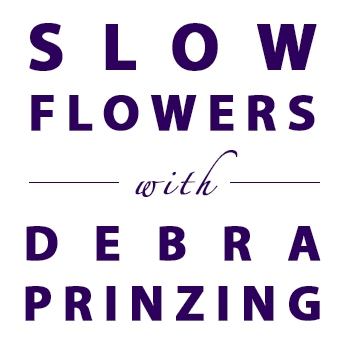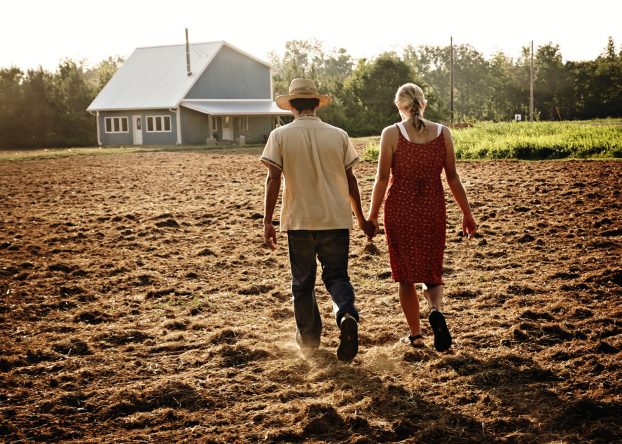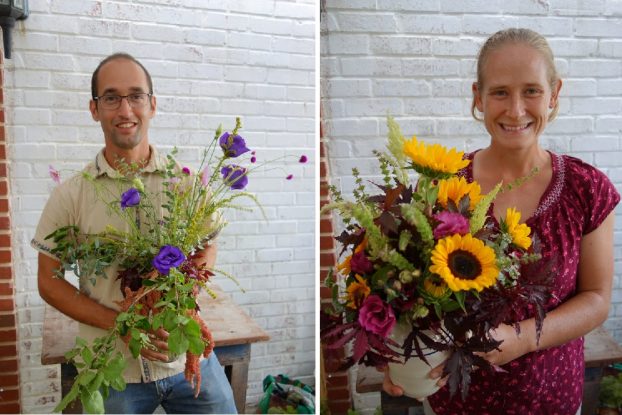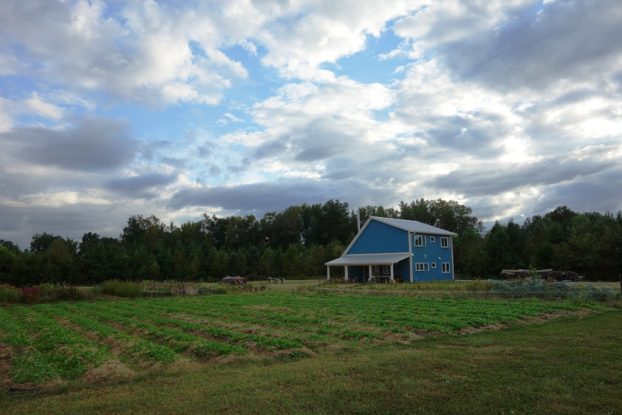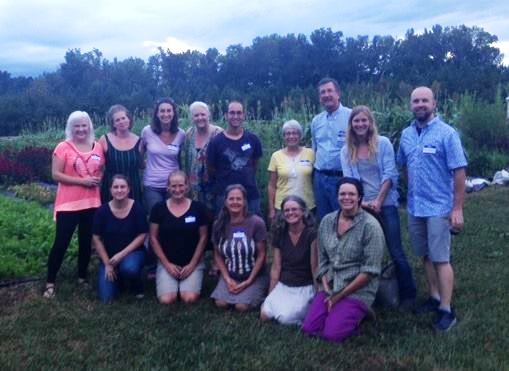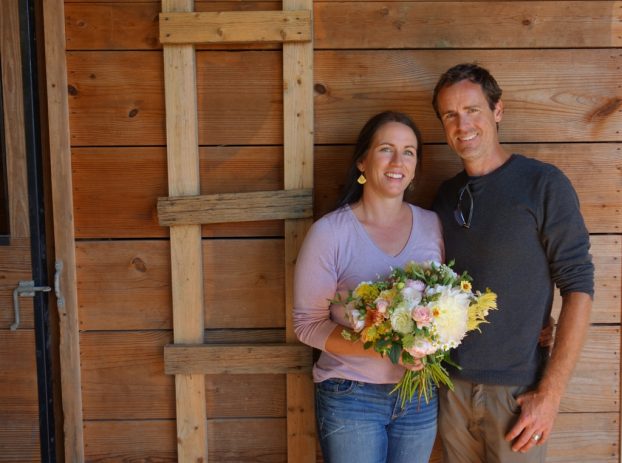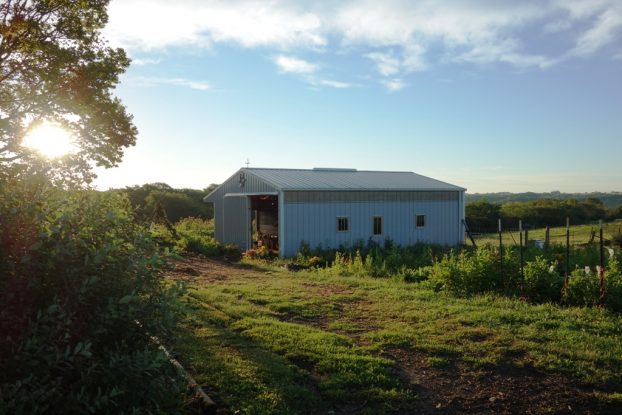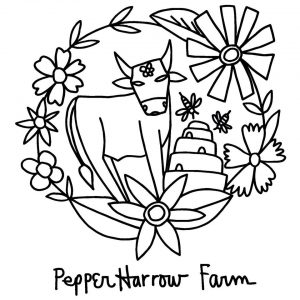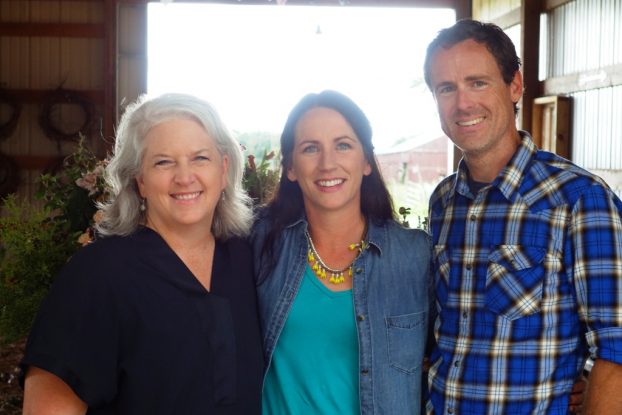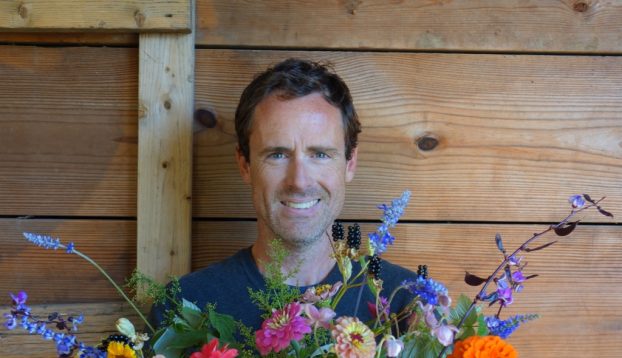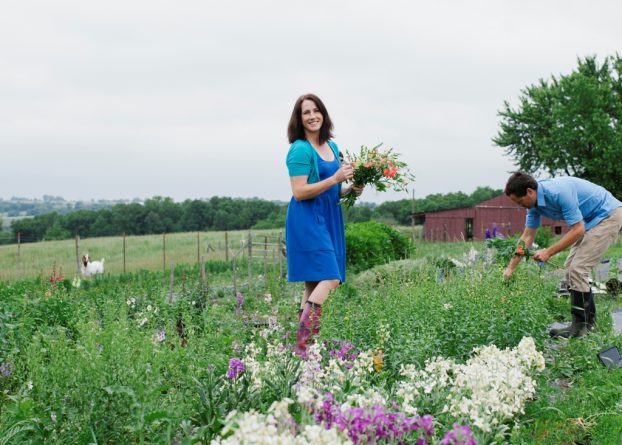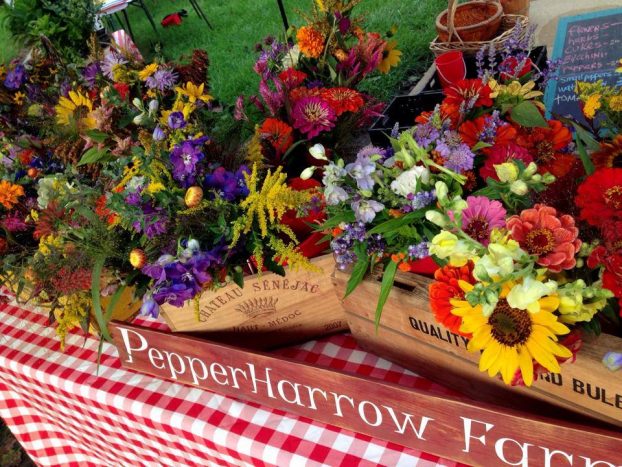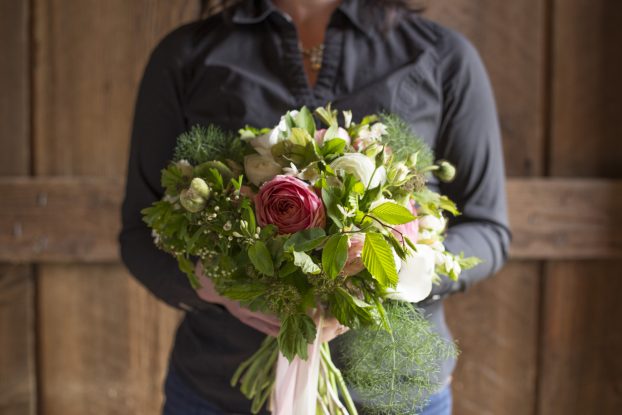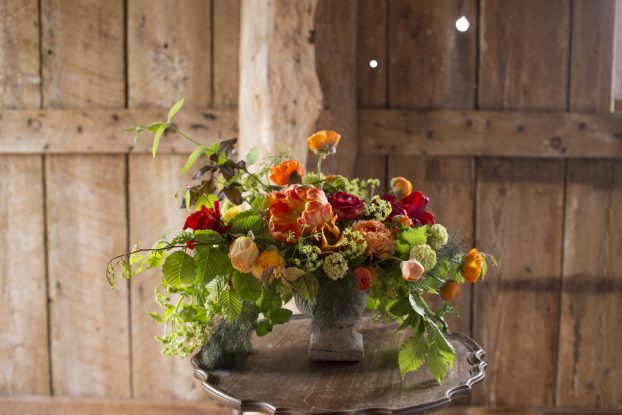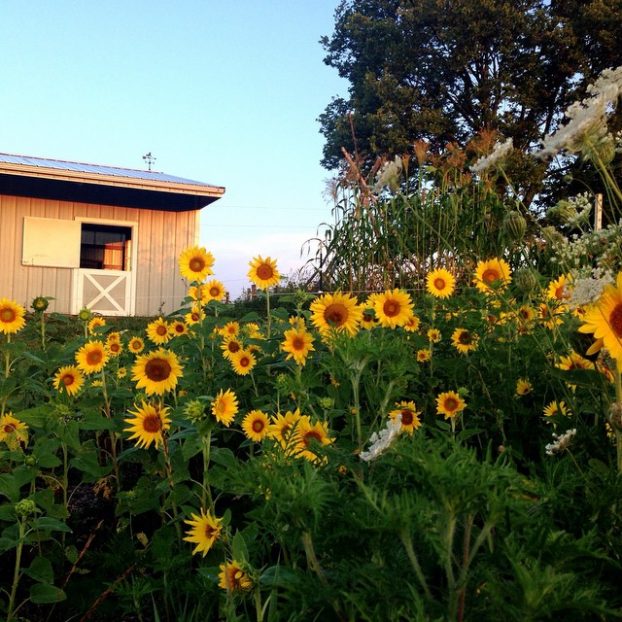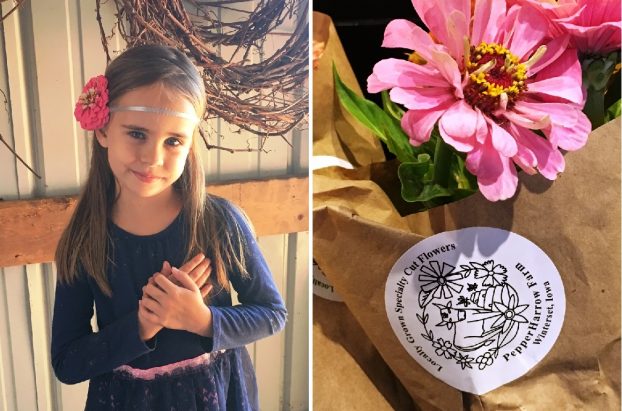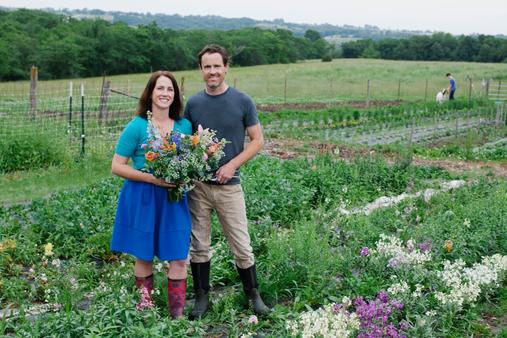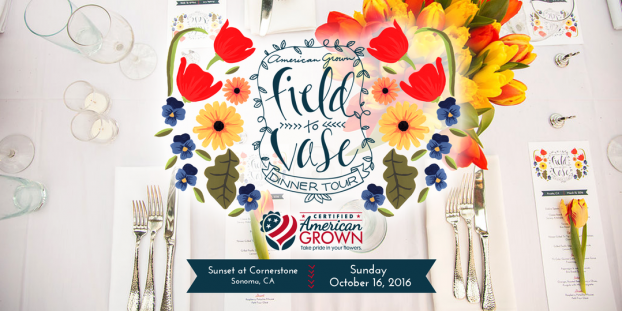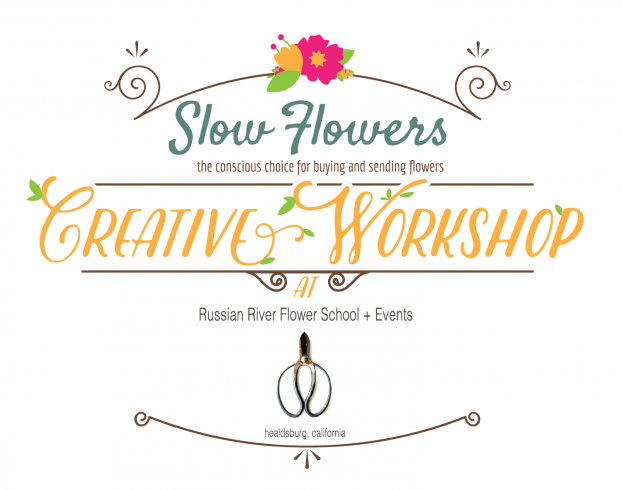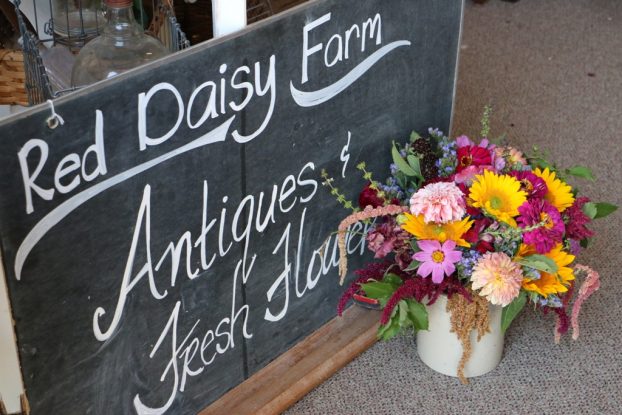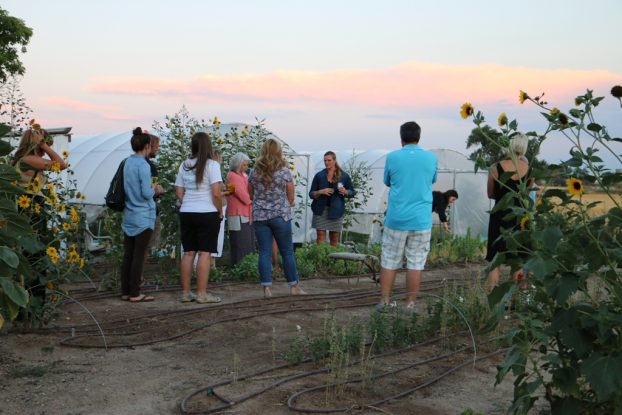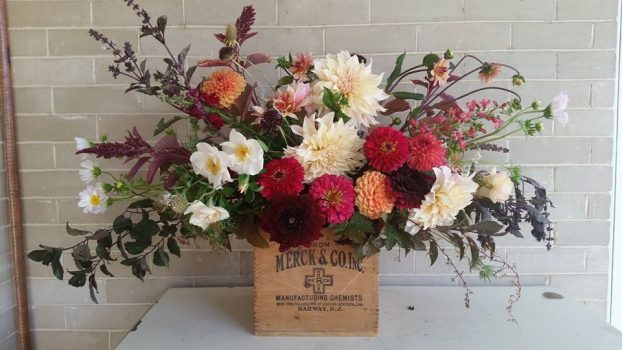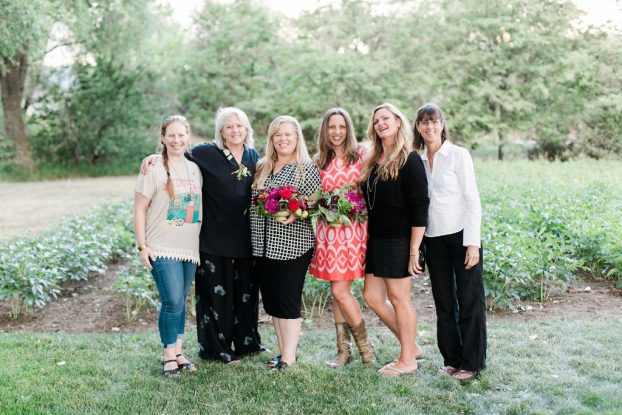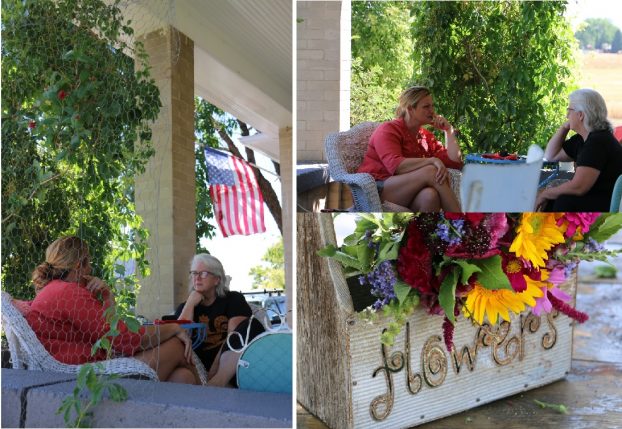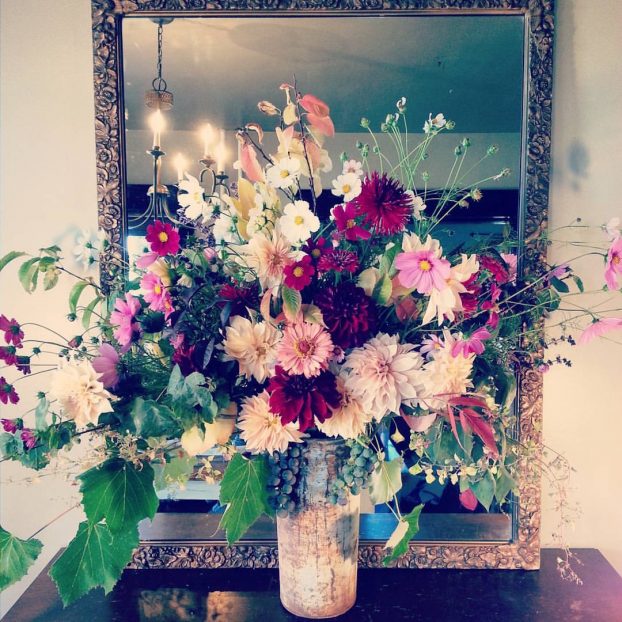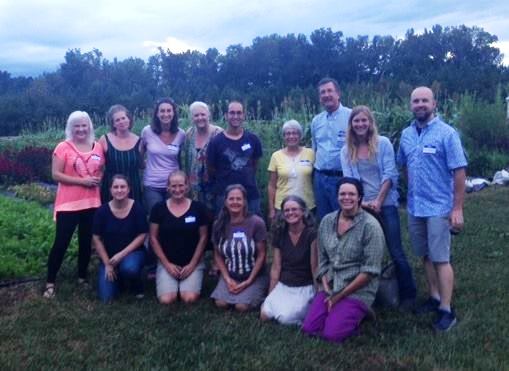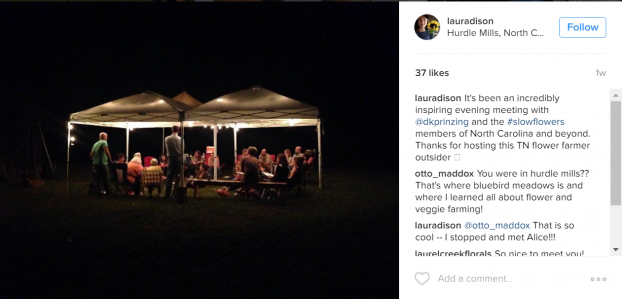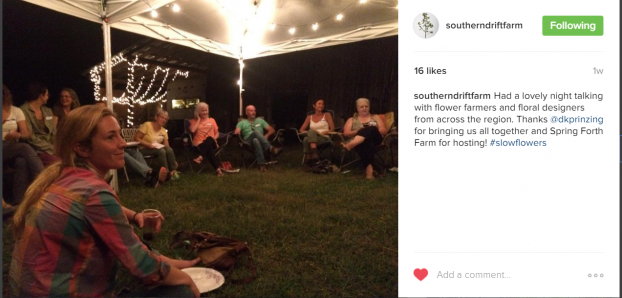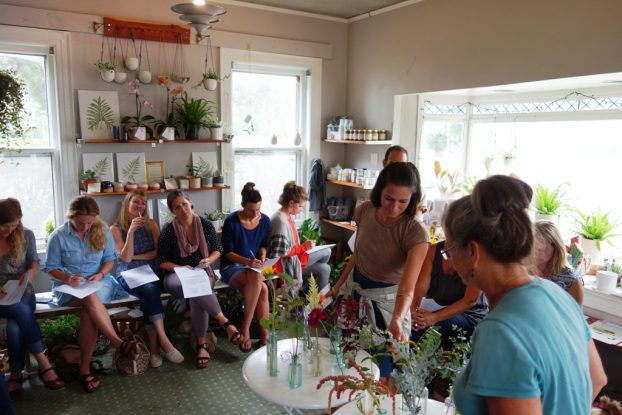Podcast: Play in new window | Download
Subscribe: Apple Podcasts | Podcast Index | | More
 One of the most rewarding things I’ve experienced since launching the Slow Flowers Movement has been meeting emerging floral entrepreneurs and witnessing how their businesses flourish. Today, we’re returning to two floral enterprises featured on previous episodes of the Slow Flowers Podcast to share updates with you.
One of the most rewarding things I’ve experienced since launching the Slow Flowers Movement has been meeting emerging floral entrepreneurs and witnessing how their businesses flourish. Today, we’re returning to two floral enterprises featured on previous episodes of the Slow Flowers Podcast to share updates with you.
First, you’ll hear from Mary Kate Kinnane of The Local Bouquet in Little Compton, Rhode Island, and next you’ll hear a conversation with Molly Kobelt and Heidi Joynt of Field & Florist, which operates a Chicago design studio and a Three Oaks, Michigan-based flower farm.
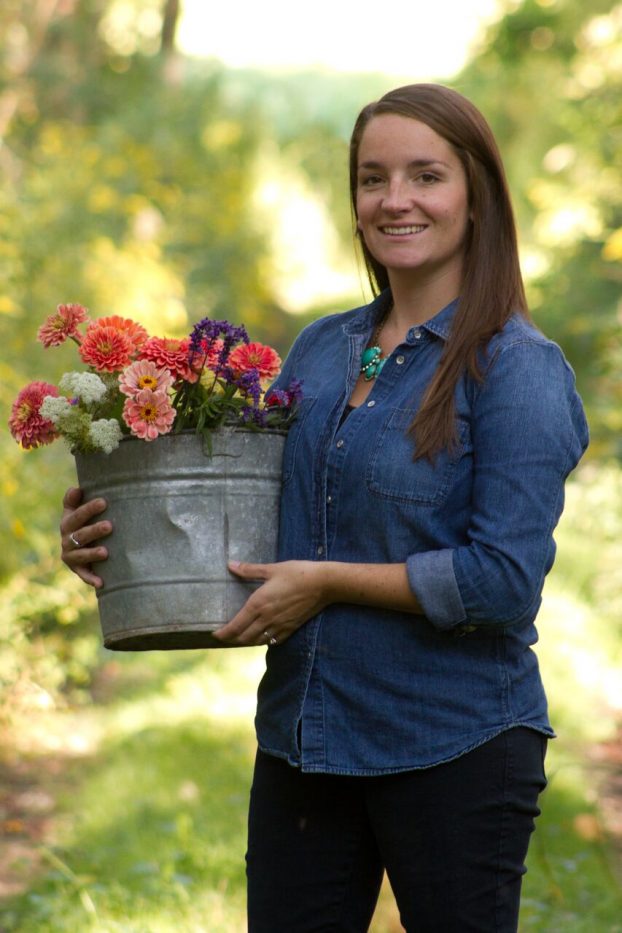
Mary Kate Kinnane, The Local Bouquet, our return guest.
Mary Kate and The Local Bouquet were originally featured in Episode 138, which aired April 2014.
You’ll hear our follow-up discussion about how the business changed from a partnership with Maureen Azize, Mary Kate’s sister-in-law, to a sole proprietorship.
Mary Kate and I will discuss the pain and pleasure of going solo — and what that has meant as she also juggles three small children and the demands of countless wedding clients.
Here’s more about The Local Bouquet, from the web site:
A MISSION TO SUPPORT THE AMERICAN FLOWER FARMER
At The Local Bouquet we have taken the two things we love; weddings and fresh, seasonal flowers and combined them to bring you the most beautiful designs for your special day. We are committed to creating gorgeous floral decor that compliments the chosen time of year of your wedding using 100% local and American-grown flowers only.
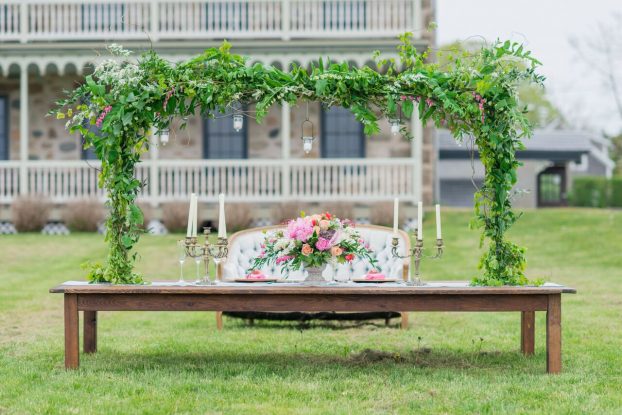
The Local Bouquet’s American Grown Weddings — love this slogan!
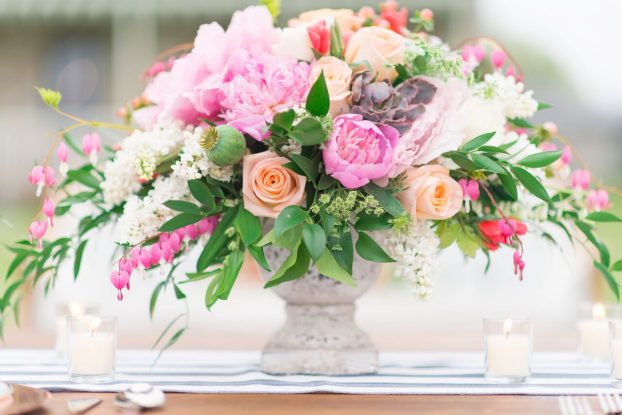
Design by The Local Bouquet ~ lovely!!
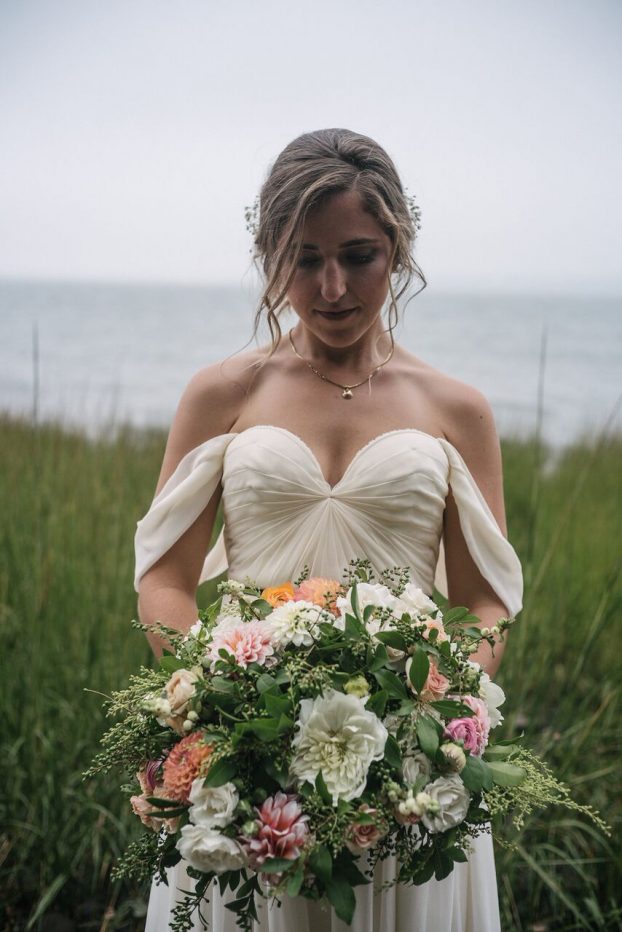
A romantic bridal bouquet designed by The Local Bouquet’s Mary Kate Kinnane.
The Local Bouquet’s ingredients are gathered or foraged fresh from flower fields and sourced from local flower farmers.
Mary Kate believes that origin matters and values providing unique, fresh, and stunning flowers that are eco-conscience and organic.
“We think flowers should come from local farms and free of chemicals,” she writes.
“That is why we are committed to the field to vase movement that is happening across the United States as we celebrate local flowers and American flower farmers!”
FLOWERS FROM THEIR FARM
The second part of today’s episode features Field & Florist’s Heidi Joynt and Molly Kobelt.
The women were my podcast guests for Episode 148 in July 2014.
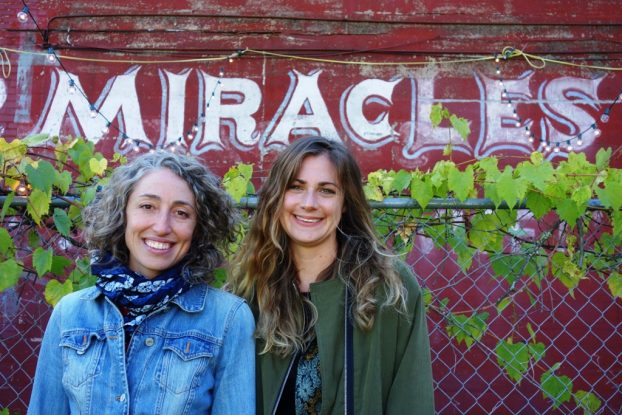
I photographed this portrait of Heidi Joynt (left) and Molly Kobelt (right) behind the Jam Handy Building in Detroit. Isn’t it cool that the signage “Miracles” frames this shot? I totally unexpected detail.
At the time, these entrepreneur farmer-florists were farming on their second piece of land, owned by a friend of a friend outside Chicago. Wow, a lot has changed in 2016, with Field & Florist’s move last fall to a larger parcel of land in Three Oaks, Michigan. In the works for a while, the shift to a more permanent place to farm flowers has allowed Field & Florist to significantly scale its growing operation.
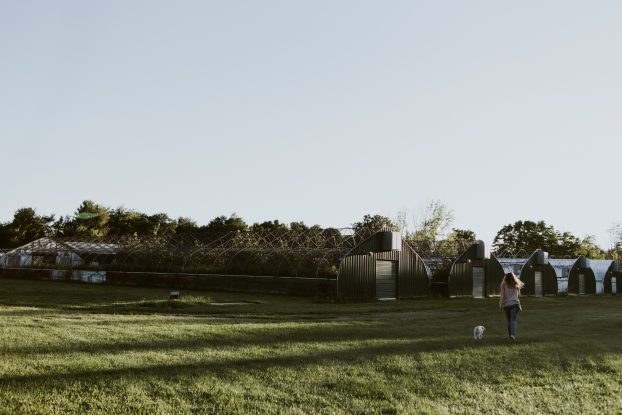
The new farmland offers so much potential for Field & Florist’s expansion! (c) Jaclyn Simpson Photography
With the opportunity to experiment with spring greenhouse production of ranunculus, Icelandic poppies and more, a large increase in acreage for field production (peonies, garden roses, and of course, more dahlias) and the chance to wild-forage, the duo has continued to serve Chicago’s floral marketplace in year one of their new chapter.
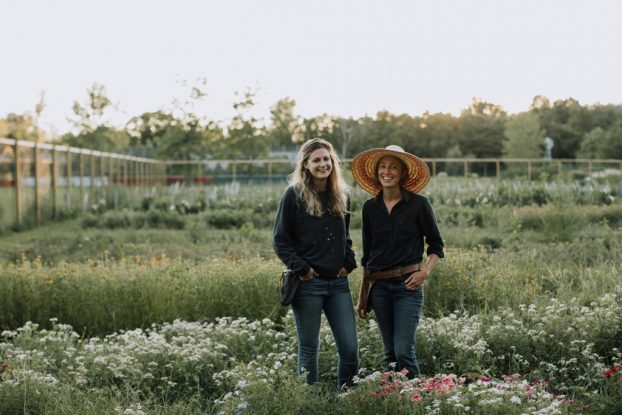
Molly and Heidi at their new farm site. (c) Jaclyn Simpson Photography
From April-October Heidi and Molly grow and harvest direct from their farm. In the winter months, they source flowers from certified sustainable sources within the United States.
In 2015 Apartment Therapy included Field & Florist in its “Top 10 Under 40: Design & Food” and Martha Stewart Weddings named Field & Florist on its list of 62 Top Floral Designers. To quote Molly and Heidi on their blog post about the inclusion, “whoa”!
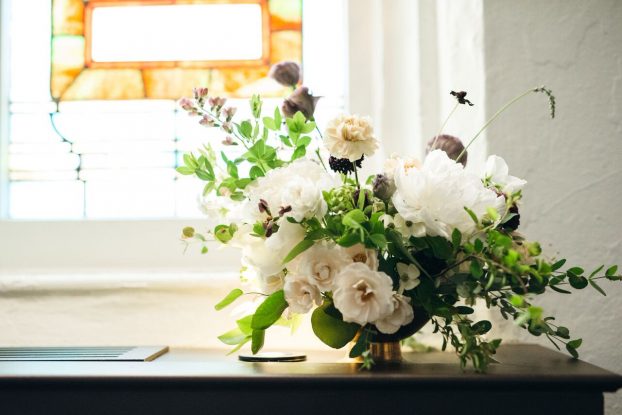
A beautiful centerpiece by Field & Florist (c) Levi & Val Photography
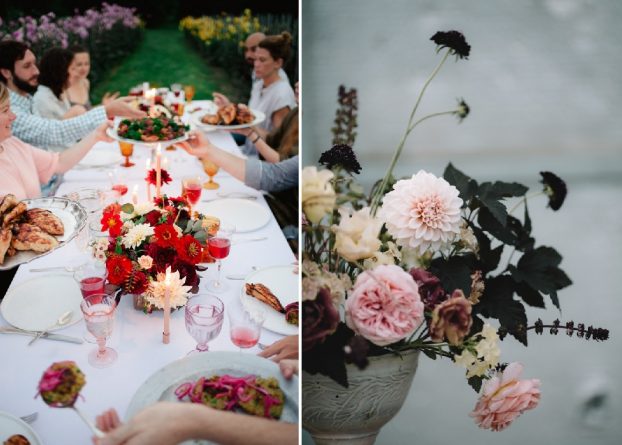
Exquisite details in two designs by Field & Florist’s Heidi Joynt and Molly Kobelt. Left image (c) Roots of Life Photography; Right image (c) Jaclyn Simpson Photography
Here’s how to find and follow today’s guests:
The Local Bouquet on Facebook
The Local Bouquet on Instagram
The Local Bouquet on Pinterest
Field & Florist on Facebook
Field & Florist on Instagram
Field & Florist on Pinterest
Thanks for joining today’s conversation! The Slow Flowers Podcast has been downloaded more than 126,000 times by listeners like you. THANK YOU to each one of you for downloading, listening, commenting and sharing. It means so much.
If you value the content you receive each week, I invite you to show your thanks and support the Slow Flowers Podcast with a donation — the button can be found on our home page in the right column. Your contributions will help make it possible to transcribe future episodes of the Podcast.
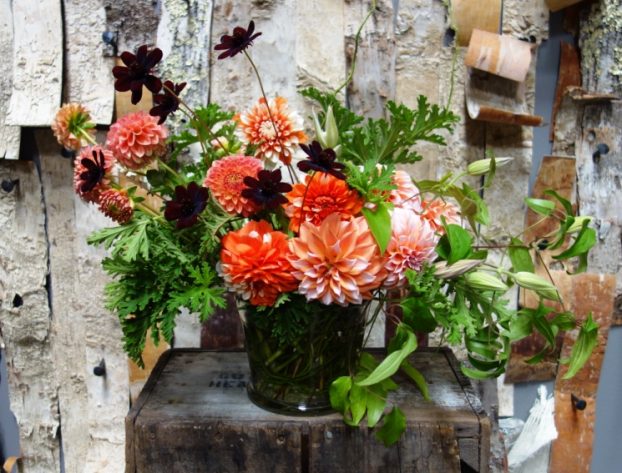
Flowers from Sonoma County inspired designs at the Slow Flowers Creative Workshop in October.
Wow, what a fabulous season we’re having for local flowers! So much creativity and beauty has been going on as many of you are closing up the season for field-grown flowers. The frost has arrived for many flower farmers, but the planning for off-season activities continues. And I love how much inventiveness is out there, extending through winter as you generate income and sustain your business model. For designers, florists and their clients, thoughts of harvest, home and holiday are top of mind.
By the time you hear this, Slowflowers.com will have released its first Editorial Content package to the media and yes, our imagery and story tips focused around harvest, home and holiday.
Our next package, Slow Valentine’s Day, will be released on January 5th but we need your submissions by December 1st. This package will highlight romantic American-grown/Canadian-grown floral designs with an emphasis on domestic roses (as an alternative to imported ones) OR new botanical options for V-day. Participation is open to all Premium members on Slowflowers.com or for a nominal fee to Standard members. Look for details in our next Slow Flowers newsletter, out November 1st. And by the way, you can subscribe to the newsletter here.
 Thank you to our lead sponsor for 2016: Certified American Grown Flowers. The Certified American-Grown program and label provide a guarantee for designers and consumers on the source of their flowers. Take pride in your flowers and buy with confidence, ask for Certified American Grown Flowers. To learn more visit americangrownflowers.org.
Thank you to our lead sponsor for 2016: Certified American Grown Flowers. The Certified American-Grown program and label provide a guarantee for designers and consumers on the source of their flowers. Take pride in your flowers and buy with confidence, ask for Certified American Grown Flowers. To learn more visit americangrownflowers.org.
More sponsor thanks goes to Syndicate Sales, an American manufacturer of vases and accessories for the professional florist. Look for the American Flag Icon to find Syndicate’s USA-made products and join the Syndicate Stars loyalty program at syndicatesales.com.
A big bouquet of thanks goes to Longfield Gardens… providing home gardeners with high quality flower bulbs and perennials. Their online store offers plants for every region and every season, from tulips and daffodils to dahlias, caladiums and amaryllis. Visit them at lfgardens.com.
A fond thank you Arctic Alaska Peonies, a cooperative of 50 family farms in the heart of Alaska providing high quality, American Grown peony flowers during the months of July and August. Visit them today at arcticalaskapeonies.com
And finally, thank you Association of Specialty Cut Flower Growers. Formed in 1988, ASCFG was created to educate, unite, and support commercial cut flower growers. It mission is to help growers produce high-quality floral material, and to foster and promote the local availability of that product. Learn more at ascfg.org
Next week, you’re invited to join me in putting more American grown flowers on the table, one vase at a time. And If you like what you hear, please consider logging onto Itunes and posting a listener review.
The content and opinions expressed here are either mine alone or those of my guests alone, independent of any podcast sponsor or other person, company or organization.
The Slow Flowers Podcast is engineered and edited by Andrew and Hannah Brenlan. Learn more about their work at shellandtree.com.
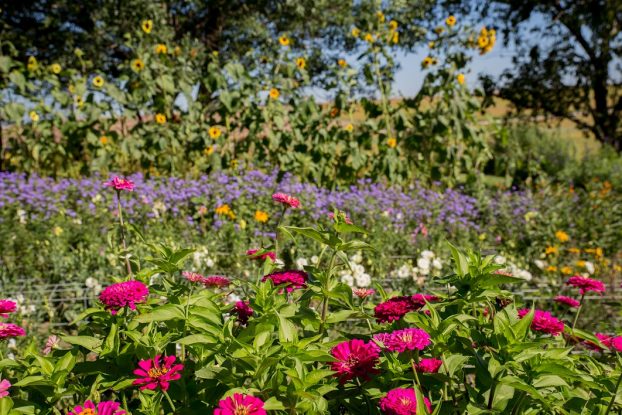
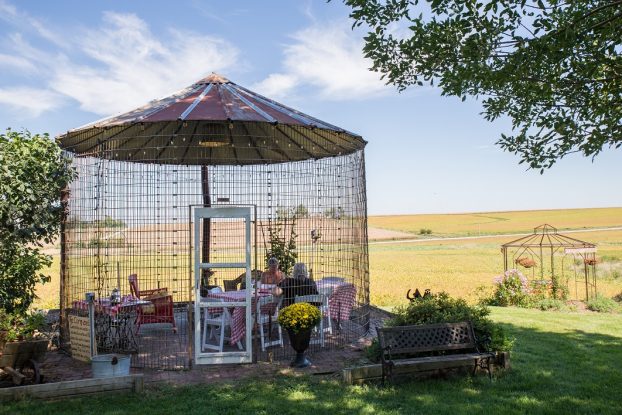
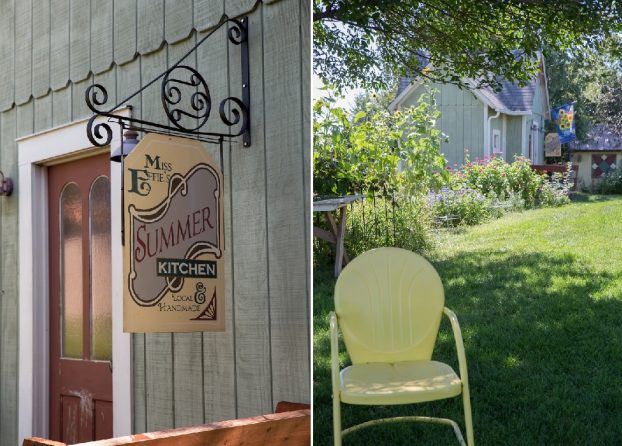
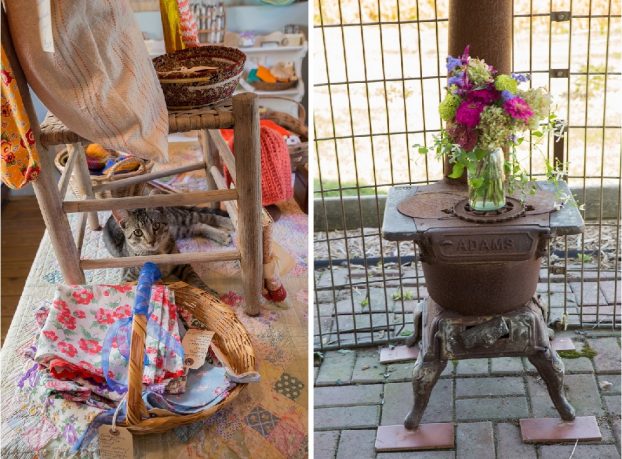
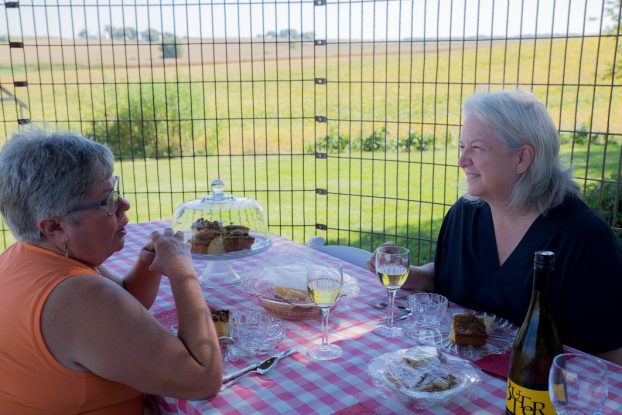
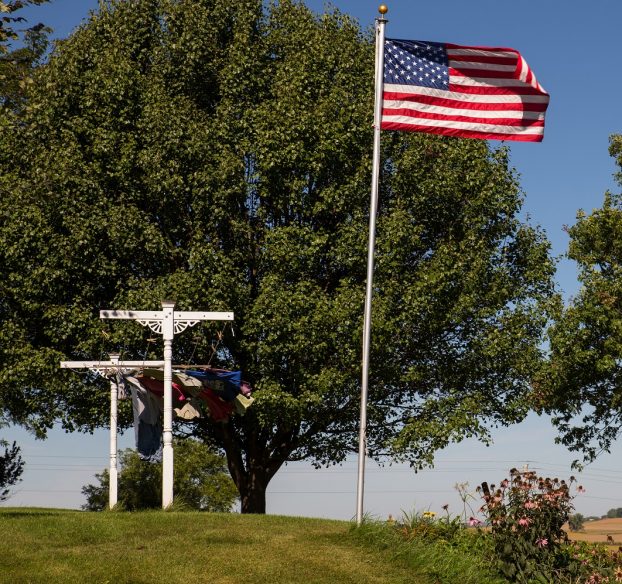









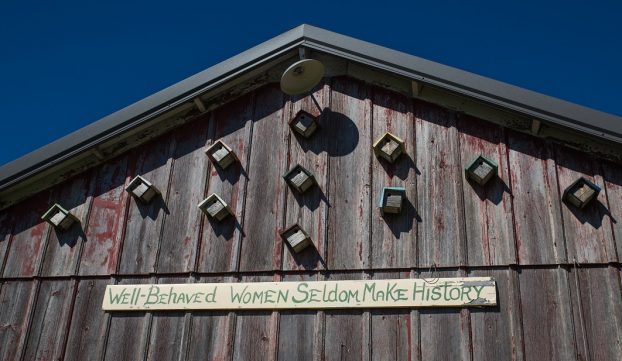
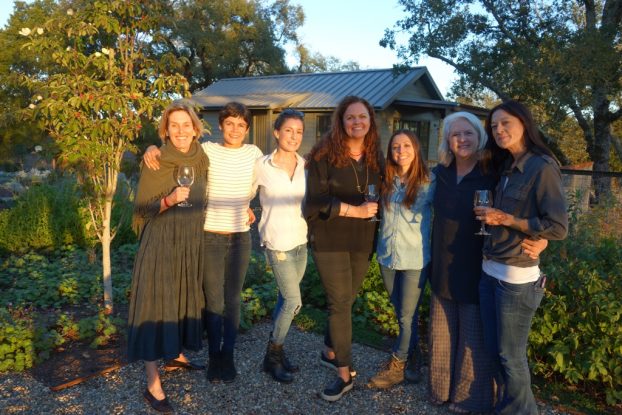
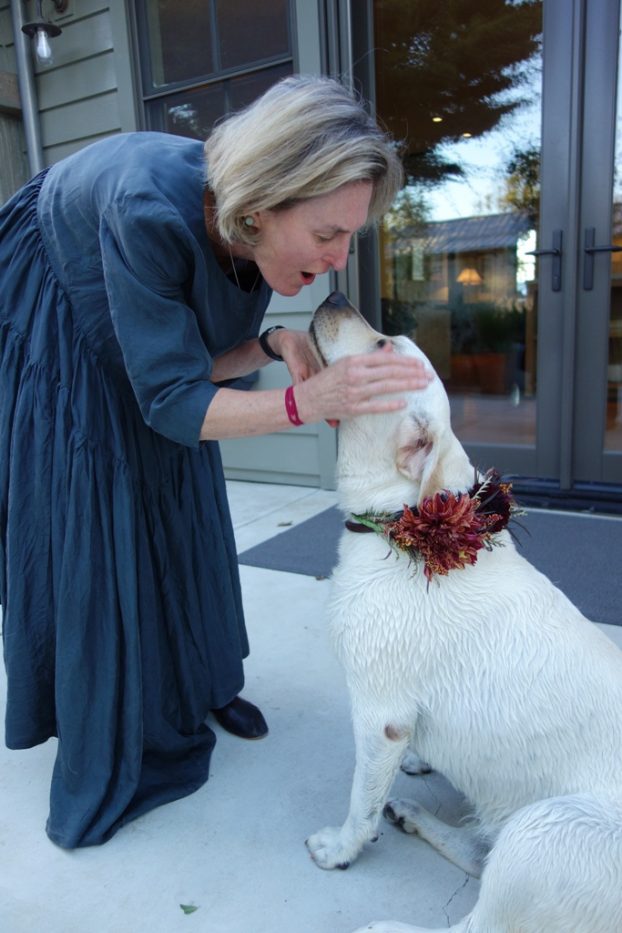
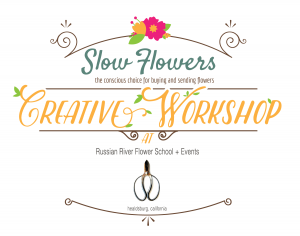 Earlier this month I had the distinct pleasure of teaching with Dundee Butcher of Russian River Flower School in Healdsburg, California.
Earlier this month I had the distinct pleasure of teaching with Dundee Butcher of Russian River Flower School in Healdsburg, California.